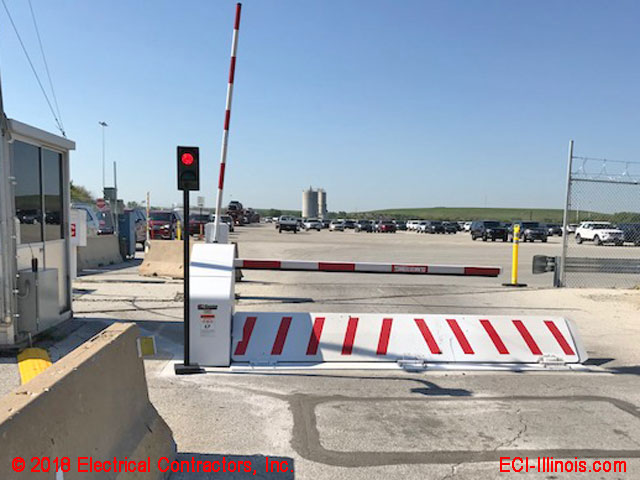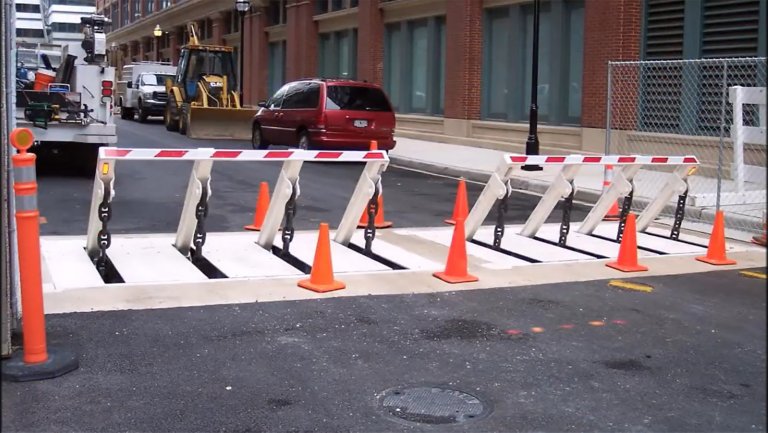10 Simple Techniques For Wedge Barriers

Not known Factual Statements About Wedge Barriers
g., springtime assistance 65 )might be taken care of to the end of the spring rod 58 to allow compression of the springs 60. As the springs 60 are compressed between the spring sustains 62, the spring assembly 54 produces a force acting on the web cam coupled to the springtime rod 58 in a direction 66. As an example, the continuing to be pressure used to
the cam to release the wedge plate 16 might be offered by an electromechanical actuator 84 or other actuator. Because of this, the springtime assembly 54 and the actuator 84(e. g., electromechanical actuator)might run together to translate the cam and lift the wedge plate 16.
As stated above, the spring assembly 54 applies a constant pressure on the camera, while the electromechanical actuator may be managed to exert a variable force on the webcam, therefore allowing the training and lowering( i. e., releasing and retracting )of the wedge plate 16. In certain embodiments, the consistent pressure used by the springtime setting up 54 may be flexible. g., electromechanical actuator) is disabled. As will certainly be appreciated, the spring setting up 54 might be covered and secured from particles or various other components by a cover plate(e. g., cover plate 68 displayed in FIG. 4) that might be substantially flush with the elevated surface 38 of the structure 14. As mentioned above, in the released placement, the wedge plate 16 offers to block access or traveling past the barrier 10. As an example, the barrier 10(e. g., the wedge plate 16 )might obstruct pedestrians or lorries from accessing a property or pathway. As gone over above, the barrier 10 is affixed to the support 30 protected within the foundation 14,

front braces 71. Consequently, the affiliation assemblies 72 may pivot and revolve to make it read the full info here possible for the collapse and extension of the link settings up 72 during retraction and release of the bather 10. The link assemblies 72 reason activity of the wedge plate 16 to be restricted. For instance, if a vehicle is taking a trip towards the deployed wedge plate 16(e. As an example, in one scenario, the safety and security legs 86 might be extended duringmaintenance of the barrier 10. When the safety legs 86 are released, the security legs 86 sustain the weight of the wedge plate 16 against the surface area 12. Therefore, the training mechanism 50 may be deactivated, serviced, gotten rid of, changed, and so forth. FIG. 5 is partial perspective view of an embodiment of the surface-mounted wedge-style obstacle 10, showing the web cam 80 and the webcam surface areas 82 of the lifting system 50. Particularly, 2 camera surfaces 82, which are described as reduced webcam surface areas 83, are positioned listed below the webcam 80. The lower camera surfaces 83 might be repaired to the surface 12 (e. For instance, the reduced camera surfaces 83 and the mounting plate 85 might create a solitary piece that is secured to the anchor 30 by bolts or various other mechanical bolts. Furthermore, two cam surfaces 82, which are described as upper camera surfaces 87, are positioned over the cam 80 and paired to (e. In various other embodiments, stepping in layers or plates might be placed in between the surface 12 and the lower camera surface areas 83 and/or the wedge plate 16 and the upper web cam surface areas 87 As mentioned over, the web cam
80 equates along the web cam surfaces 82 when the wedge plate 16 is lifted from the pulled back setting to the released his response setting. In addition, as discussed over, the springtime assembly 54 (see FIG. 3 )might supply a pressure acting upon the cam 80 in the instructions 102 by means of spring rod 58, which may decrease the force the electromechanical actuator 84 is needed to use to the cam 80 in order to actuate and raise the wedge plate 16. 1 )to the released setting(see FIG. 4). As shown, the cam 80 consists of track wheels 104(e. g., rollers), which get in touch with and convert along the web cam surfaces 82 throughout procedure.